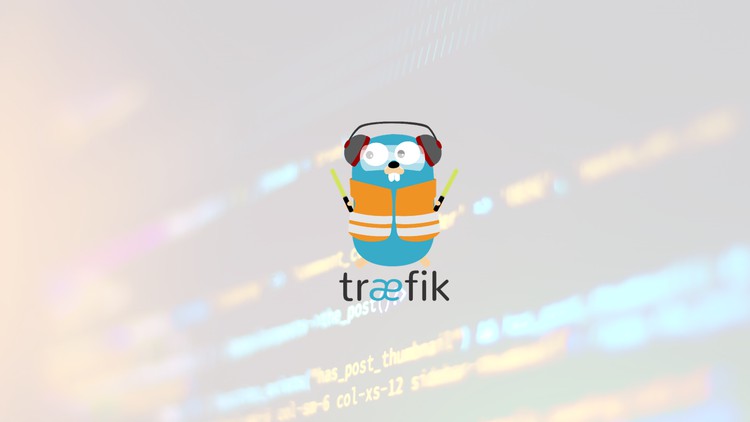How to Set Up Dynamic Domain Mapping with Traefik on GCP
 Timothy Olaleke
Timothy Olaleke
Introduction
In this guide, we will walk through the steps to set up a GCP instance, install Docker, Docker Compose, and Traefik, and then use a Flask application to dynamically create reverse proxies for domain mapping to container images. Additionally, we will cover how to map a domain using Google Cloud DNS.
Prerequisites
Before we begin, ensure you have the following:
A Google Cloud Platform (GCP) account
Basic knowledge of GCP, Docker, and Flask
A domain name for mapping
Step 1: Set Up a GCP Instance
Create a GCP Project
Go to the GCP Console: Google Cloud Console.
Create a new project:
Click on the project dropdown at the top of the page.
Click on "New Project".
Enter a project name and select your billing account.
Click "Create".
Create a VM Instance
Navigate to the "Compute Engine" section:
Click on the hamburger menu (three horizontal lines) in the top-left corner.
Select "Compute Engine" > "VM instances".
Create a new instance:
Click "Create Instance".
Configure the instance with the following settings:
Name:
flask-traefik-instanceRegion: Select a region close to you
Machine type:
e2-mediumor higherBoot disk: Ubuntu 20.04 LTS
Click "Create" to launch the instance.
Connect to the VM:
- Once the instance is running, click "SSH" to connect to the VM.
Step 2: Install Docker
Update the package list:
sudo apt updateInstall Docker:
sudo apt install -y docker.io sudo systemctl start docker sudo systemctl enable dockerAdd your user to the Docker group:
sudo usermod -aG docker ${USER} newgrp docker
Step 3: Install Docker Compose
Download Docker Compose:
sudo curl -L "https://github.com/docker/compose/releases/download/1.29.2/docker-compose-$(uname -s)-$(uname -m)" -o /usr/local/bin/docker-composeApply executable permissions:
sudo chmod +x /usr/local/bin/docker-composeVerify installation:
docker-compose --version
Step 4: Set Up Traefik
Create a Docker Compose file for Traefik
Create a
docker-compose.ymlfile with the following content:version: '3.8' services: traefik: container_name: traefik image: 'traefik:v2.10' restart: unless-stopped network_mode: host extra_hosts: - 'host.docker.internal:host-gateway' volumes: - '/var/run/docker.sock:/var/run/docker.sock:ro' - '/data/traefik:/traefik' command: - '--ping=true' - '--ping.entrypoint=http' - '--api.dashboard=true' - '--api.insecure=false' - '--entrypoints.http.address=:80' - '--entrypoints.https.address=:443' - '--entrypoints.http.http.encodequerysemicolons=true' - '--entryPoints.http.http2.maxConcurrentStreams=50' - '--entrypoints.https.http.encodequerysemicolons=true' - '--entryPoints.https.http2.maxConcurrentStreams=50' - '--providers.docker.exposedbydefault=false' - '--providers.file.directory=/traefik/dynamic/' - '--providers.file.watch=true' - '--certificatesresolvers.letsencrypt.acme.httpchallenge=true' - '--certificatesresolvers.letsencrypt.acme.storage=/traefik/acme.json' - '--certificatesresolvers.letsencrypt.acme.httpchallenge.entrypoint=http' - '--providers.docker=true' labels: - traefik.enable=true - traefik.http.routers.traefik.entrypoints=http - traefik.http.routers.traefik.service=api@internal - traefik.http.services.traefik.loadbalancer.server.port=8080Start Traefik:
sudo docker-compose up -d
Step 5: Set Up Flask for Dynamic Domain Mapping
Create a Flask application
Create a directory for your Flask application and navigate into it:
mkdir flask-traefik cd flask-traefikCreate a
main.pyfile with the following content:from flask import Flask, request, jsonify from pydantic import BaseModel from flask_pydantic import validate import os import yaml app = Flask(__name__) class TraefikConfig(BaseModel): domain: str port: int app_name: str class Config: schema_extra = { "example": { "domain": "newdomain.yourdomain.com", "port": 4000, "app_name": "myapp" } } DYNAMIC_CONFIG_DIR = os.getenv("TRAEFIK_DYNAMIC_CONFIG_DIR", "/data/traefik/dynamic/") DOCKER_NETWORK_IP = os.getenv("DOCKER_NETWORK_IP", "host.docker.internal") def reload_traefik(): os.system("docker restart traefik") def add_domain_to_traefik(config: TraefikConfig): dynamic_config_path = os.path.join(DYNAMIC_CONFIG_DIR, f"{config.domain}.yaml") dynamic_config = { "http": { "middlewares": { "redirect-to-https": { "redirectscheme": { "scheme": "https" } }, "gzip": { "compress": True } }, "routers": { f"{config.app_name}-http": { "middlewares": ["redirect-to-https"], "entryPoints": ["http"], "service": config.app_name, "rule": f"Host(`{config.domain}`)" }, f"{config.app_name}-https": { "entryPoints": ["https"], "service": config.app_name, "rule": f"Host(`{config.domain}`)", "tls": { "certresolver": "letsencrypt" } } }, "services": { config.app_name: { "loadBalancer": { "servers": [ {"url```yaml f"http://{DOCKER_NETWORK_IP}:{config.port}"} ] } } } } } with open(dynamic_config_path, 'w') as f: yaml.dump(dynamic_config, f, default_flow_style=False) reload_traefik() @app.route("/add-domain/", methods=["POST"]) @validate() def add_domain(body: TraefikConfig): try: add_domain_to_traefik(body) return jsonify({"message": "Domain added successfully!"}) except Exception as e: return jsonify({"error": str(e)}), 500 if __name__ == "__main__": app.run(host="0.0.0.0", port=8000)Create a
Dockerfilefor your Flask app:FROM python:3.8-slim WORKDIR /app COPY . /app RUN pip install flask pydantic flask-pydantic pyyaml CMD ["python", "main.py"]Build and run the Flask app:
sudo docker build -t flask-traefik-app . sudo docker run -d --name flask-traefik-app -e TRAEFIK_DYNAMIC_CONFIG_DIR=/data/traefik/dynamic/ -e DOCKER_NETWORK_IP=host.docker.internal -p 8000:8000 flask-traefik-app
Step 6: Configure Domain Mapping with Google Cloud DNS
Set Up Cloud DNS
Navigate to Cloud DNS:
Click on the hamburger menu (three horizontal lines) in the top-left corner.
Select "Network Services" > "Cloud DNS".
Create a DNS Zone:
Click "Create Zone".
Enter a zone name and a DNS name (e.g.,
yourdomain.com).Click "Create".
Add DNS Records:
Click on your newly created zone.
Add an "A" record to point your domain to your GCP instance's external IP address.
DNS Name:
yourdomain.comResource Record Type:
ATTL:
300IPv4 Address:
<your-instance-external-ip>
Step 7: Add Domain Using Flask
Access the Flask App:
Open your browser and navigate to
http://<your-instance-ip>:8000.Use the
/add-domain/Endpoint:You can use tools like Postman or CURL to interact with the Flask app's API. Here's an example using CURL:
curl -X POST "http://<your-instance-ip>:8000/add-domain/" -H "Content-Type: application/json" -d '{ "domain": "yourdomain.com", "port": 4000, "app_name": "myapp" }'Replace
yourdomain.comwith your actual domain,4000with the port your application is running on, andmyappwith the name of your application.
Conclusion
By following these steps, you have successfully set up a GCP instance with Docker, Docker Compose, and Traefik. You have also created a Flask application that dynamically manages reverse proxy configurations for domain mapping to container images.
This setup provides a flexible and scalable solution for managing multiple applications with different domains on a single server. Feel free to customize the configurations and expand on this setup to suit your specific needs.
Subscribe to my newsletter
Read articles from Timothy Olaleke directly inside your inbox. Subscribe to the newsletter, and don't miss out.
Written by

Timothy Olaleke
Timothy Olaleke
Tim is a software developer who builds awesome stuff, he has a wide experience in building customer-based solutions for digital needs using mind-blowing technologies. He is also a DevOps Enthusiast with a passion for automation and an open-source hobbyist, in his free time, he writes a lot of Google Cloud related tutorials and makes open contributions on GitHub. Tim is an active member of various developers communities, where he focuses on making impacts and sharing his experiences whilst learning.